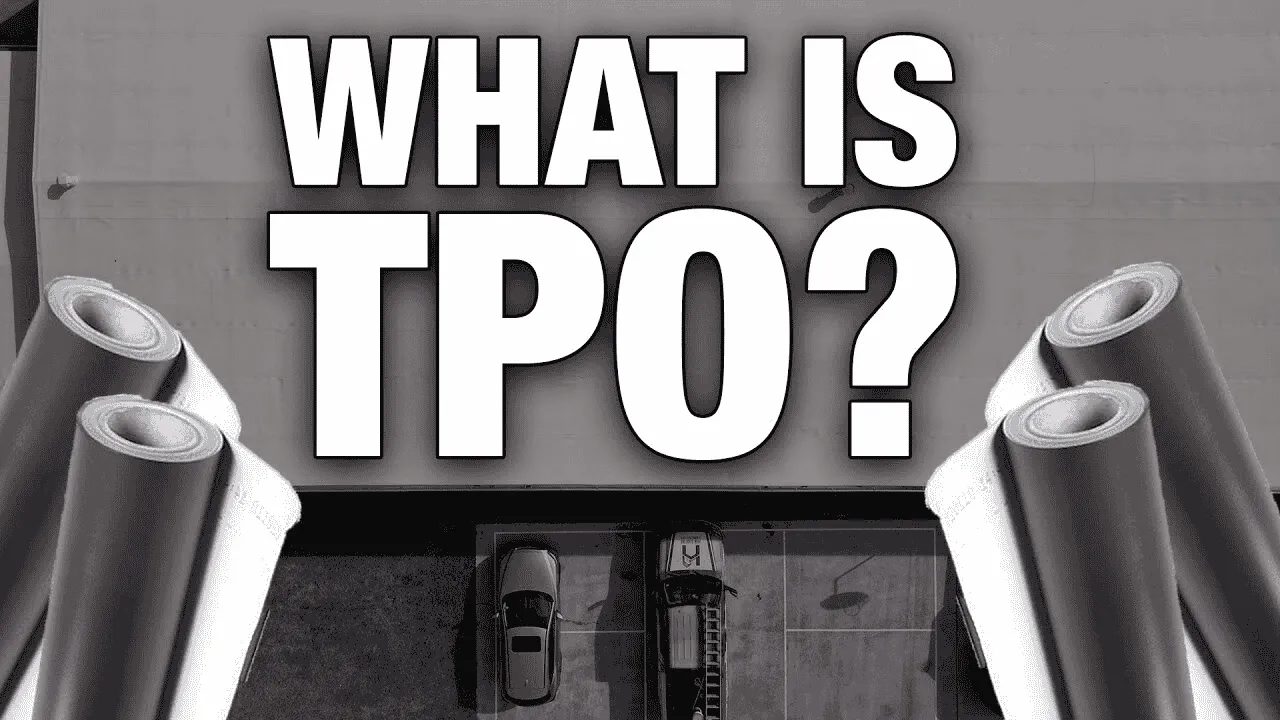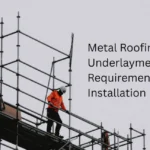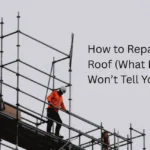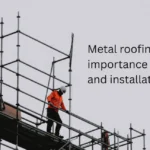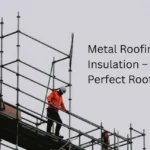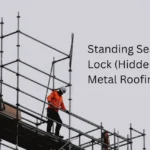What is TPO Roofing?
Hi everyone, this is the team at SJ Roofing & Venting. Today, we’re going to talk about what TPO is. We’ll explain exactly what a TPO roofing system is, who this type of roof is best for, the benefits of TPO, how long a TPO roof can last, and what the installation process looks like. If you’re a business owner and you’re thinking about installing a new TPO roof, we hope this information will help answer any questions you may have.
What is TPO?
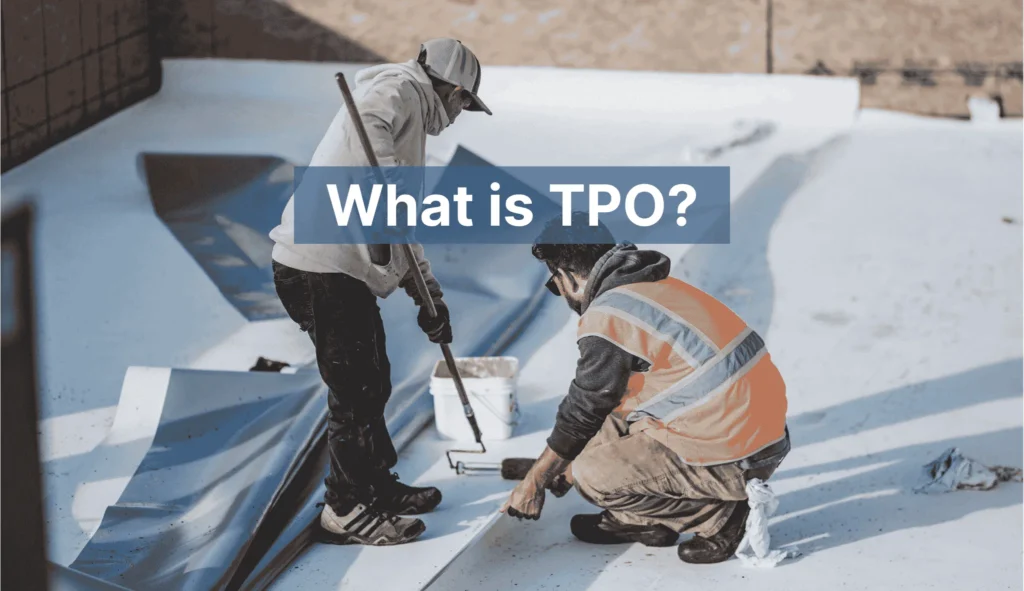
TPO stands for thermoplastic polyolefin. What it is, is basically a single-ply membrane. It’s relatively new compared to other roofing materials such as asphalt, but it’s been growing for a good amount of time now and is used on a lot of commercial properties here in the United States.
Who is TPO Actually Good For?
TPO is mostly used on commercial properties. You’ll see it on a lot of new construction, gas stations, hotels, shopping centers, industrial buildings, small businesses, offices, warehouses — mostly commercial buildings. Basically, any place with a flat or low-slope roof is where you’ll see TPO.
Why Has TPO Been Growing so Rapidly in Houston?
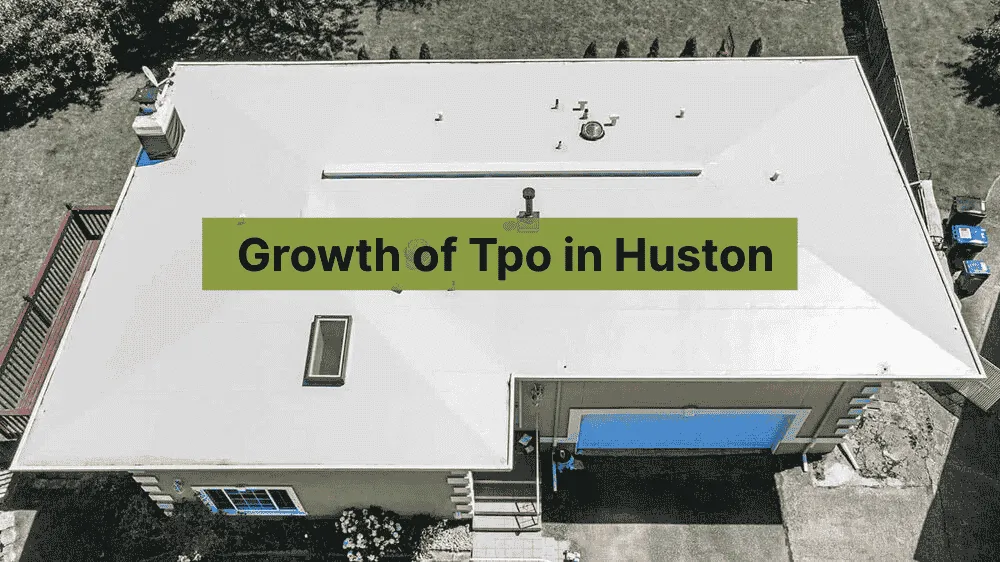
Durability
One is durability. This type of roofing system does very well in Houston weather — it withstands rain and UV very well and is very durable. These roofs tend to last about 25 to 30 years on average.
Energy Efficiency
Another reason is energy efficiency. This type of roof membrane actually bounces off UV rays coming from the sun and makes your building more energy-efficient. Instead of absorbing all that heat, it bounces it off — which saves you money on electricity for your AC units.
Cost-Effectiveness
It’s also very economical. In terms of material and labor, it’s not as expensive as you might think, so it can fit your budget pretty nicely.
Ease of Installation
And one more big reason is ease of installation. You have a couple of different options when it comes to installing this roof, and installation is a lot easier than other roofing systems. This helps you lower your costs and allows you to operate your building while the roof is being put on.
Customization
Lastly, there’s customization. When it comes to TPO, you have a lot of options in color, the type of TPO membrane, the details and trim — so you can fit your budget and the specific needs of your building.
How Long Does a TPO Roof Last?
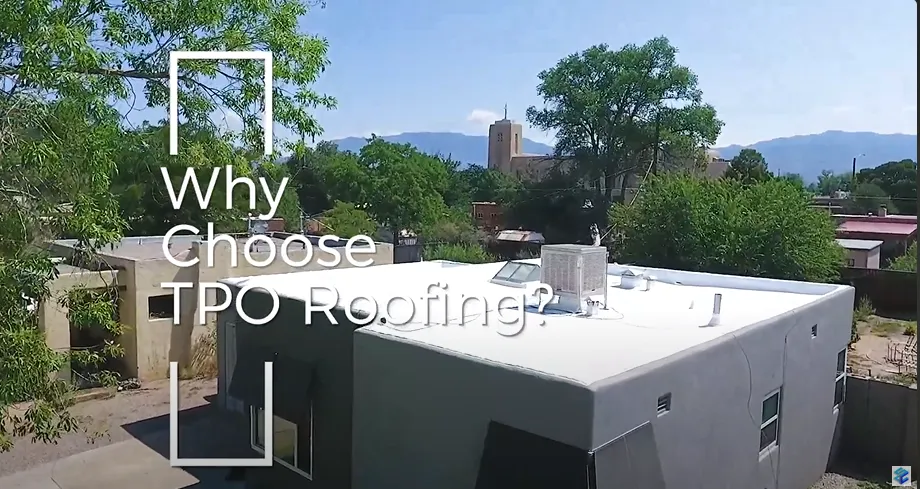
A TPO roof can last you about 25 to 30 years. The warranties and manufacturers can vary — some offer 15, 20 years and so on — but we mostly see TPO roofs here in Houston lasting about 25 to 30 years on average. One thing that really helps is regular maintenance. TPO is not as hard or difficult to maintain as other roofs, but you still need to do some upkeep to ensure its longevity.
How Do You Install a TPO Roof?
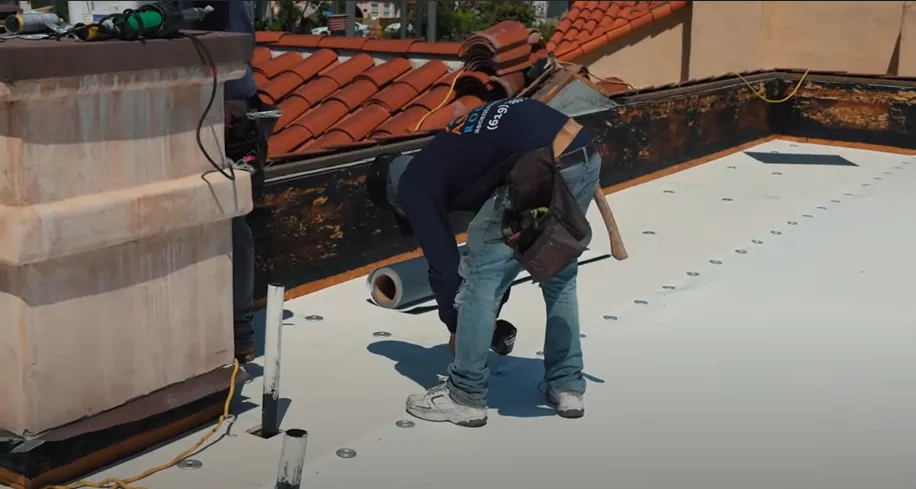
Mechanically Attached
When it comes to TPO, we’ll talk about the most common types of installation. The most common is mechanically attached. This is using fasteners to screw the TPO into the current roof system. Mechanically attached is the most common because it’s very economical and helps your roof last a long time.
Adhered
You also have the adhered option. This is mostly used in areas with a lot of high winds. This system can be more expensive than mechanically attached, which is why it’s mostly used when a building needs strong wind resistance.
Induction Welding
Another option is induction welding, which is using magnets, plates, and fasteners — a combination of mechanical attachment and adhered — to keep the TPO down. But most people we see here in Houston go with mechanically attached or adhered.
What are the Steps for Installing a TPO Roof?
Property Inspection
The first step is going out to your property and seeing what you currently have. That might mean taking a core sample to see if you have one layer or multiple layers of roofing, as well as the type of insulation and the type of decking under the roof.
Customizing the TPO Roof
From there, we can help customize the TPO roof that’s going to be best for your building.
Surface Preparation
After that, we prepare the surface, making sure everything is cleaned up.
Installing Insulation
Then we go ahead and install the insulation — whether it’s a fan fold, a polyiso board, cover board, or both.
Installing the TPO Membrane
After that, we install the TPO membrane. Both the insulation and the membrane can be installed using fasteners or an adhered system.
Welding the Seams
Once the membrane is down, we weld all the seams. This is usually done with hot-air welders and robotic machines to make sure all the seams are fused together. This is important — you have to weld it properly for the membranes to bond together and form a tight, waterproof seal.
Flashing Details
Next, we focus on the flashing — all the details like plumbing boots, rooftop units, HVAC curbs — we flash them properly so nothing is left exposed.
Edge Metal and Terminations
We also do all the edge metal and terminations around the perimeter of the roof.
Quality-Assurance Check
And lastly, we do a quality-assurance check. We walk around to make sure everything is good to go — all the seams are tight, every flashing is sealed correctly, every penetration is covered — so there are no leaks. Once that’s complete, the job is done.
Installing a TPO Roof: What to Avoid
Got it — here’s a clean version without the name or personal references, just as a company would say it:
Hello everyone, we’re the team at SJ Roofing & Venting. Today, we’re on-site at Landy’s restaurant installing a new TPO roof. Installing TPO can feel overwhelming because there are a lot of things that can go wrong. That’s why we want to go over three important things you should avoid whenever you’re installing a TPO roof.
Don’t Go Over Existing Materials
So the first thing you don’t want to do is go over existing materials because if you go over existing materials, there’s no way to see if the deck was bad or anything of that sort. This is your actual TPO roof right here, and underneath this is the insulation board. We can create any kind of pitch for this flat roof to go in any direction. The slight hits the shed water — you need it to shed water. And depending on the type of roof, it’ll be either mechanically attached or we can actually glue it down also.
Avoid Cold Welds
The second thing you don’t want to do is allow cold welds. Your heat gun needs to be at a certain temperature to seal the seams. As you can see, if this seam has a cold weld, then I’ll be able to penetrate it — it seems like we’re good. Also, around your flashings, you don’t want any kind of cold welds. So you want to probe everything to make sure that you don’t get any cold welds to have leaks.
Don’t Allow Water to Pond
So the third thing you don’t want to do whenever installing a TPO roof is create a down. As you can see, there’s water standing right here. We’re going to have to create a better pitch for all this water to flow off. Now, TPO roofs are allowed 72 hours of water to stand, but I think that this is a little bit much, so we’re going to have to fix this.
That’s all about TPO roofing. If you would like to learn more about commercial roofing, click this link right here — Roof Crafters is here to help you make the most educated decisions.
Why Hiring a Professional TPO Roofer is Important
That’s why I always emphasize that you want to make sure you hire a professional TPO roofer. Even a small mistake — like a missed weld or a flashing that’s not installed correctly — can cause big problems down the road. Whether you go with us or someone else, make sure they have the proper experience with TPO.
What Type of Insulation Do You Need for TPO?
EPS Fan Fold
EPS fan fold is usually the most economical and cheapest type of insulation. It doesn’t have a very high R-value — about 2 or so — and we mostly see fan fold installed over existing roofs when you’re doing a re-roof.
Polyiso
Polyiso is a more rigid insulation. You can get it in different thicknesses — one inch, two inches, three inches, and so on — with an R-value of about 6.7 per inch. Polyiso is a bit more expensive than fan fold, and we mostly use it for new construction or when the building needs to meet a higher R-value per code.
When to Use Fan Fold vs. Polyiso
So, we mostly use fan fold for re-roofs and polyiso for new construction, gravel roofs, or any situation that needs more insulation.
The Pros and Cons of TPO Roofing
When deciding on the right roofing system, it’s important to look at both the advantages and disadvantages. In this article, we’ll go over the pros and cons of TPO roofing so you can make an informed decision.
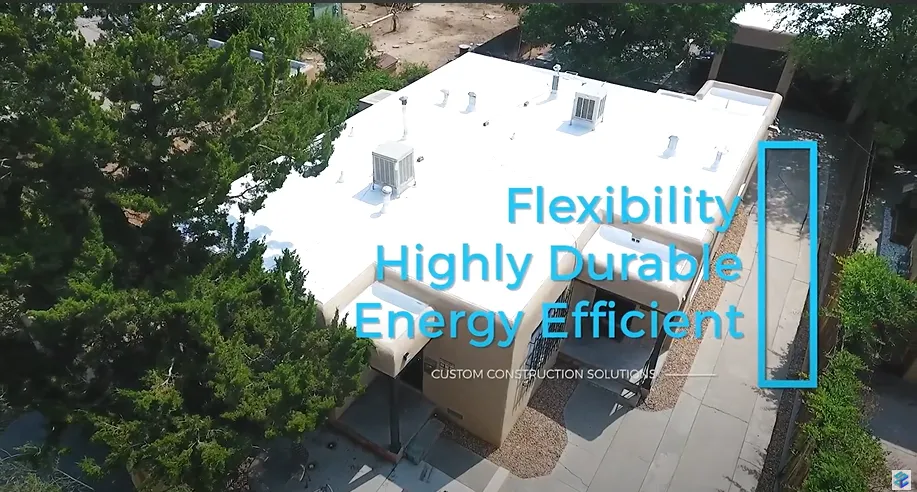
The Pros of TPO Roofing
Durability
TPO roofs are highly durable and can withstand harsh weather conditions including extreme heat, cold, and heavy rain. It is also resistant to UV rays, which helps it prevent cracking and fading.
Energy Efficiency
TPO roofs are highly reflective, which can help reduce the amount of heat absorbed by the roof. This can result in lower energy bills and a more comfortable indoor environment.
Low Maintenance
TPO roofs require minimal maintenance, making it a cost-effective option over time. It is also resistant to algae and mold growth, which can help maintain its appearance.
Easy Installation
TPO roofs are easy to install, making them an ideal choice for new construction or roof replacement projects. The sheets are typically welded together using heat to create a seamless, waterproof membrane.
The Cons of TPO Roofing
Puncture Resistance
TPO roofs may not be as puncture-resistant as other flat roofing systems. This may require periodic inspections and repairs.
Limited Lifespan
TPO roofs have a shorter lifespan compared to other roofing options such as PVC. They typically last between 15 to 20 years depending on various factors such as weather conditions and maintenance.
Not Suitable for High Temperatures
TPO roofs may not be suitable for areas with high temperatures, as they may shrink and become brittle over time.
Environmental Concerns
TPO roofs are petroleum-based materials, which might not be suitable for those looking for more sustainable roofing options.
What are TPO roofing installation details?
TPO installation involves insulation placement, adhesive or mechanical fastening, and hot-air welding of seams.
What is included in a TPO roofing material list?
Materials typically include TPO membrane, insulation boards, adhesives, fasteners, cover tape, and termination bars.
Where can I find TPO roofing installation details in PDF format?
TPO manufacturers like GAF, Johns Manville, and Firestone offer free downloadable PDFs with full install specs.
What are common TPO roofing problems?
Issues include seam failures, UV degradation over time, poor installation, and punctures from foot traffic.
How do you install TPO roofing?
Installers roll out the membrane, fasten or glue it to the deck, and heat-weld the seams for a watertight seal
What are the technical details of TPO roofing?
TPO is a single-ply reflective membrane with thermoplastic seams, often white or light-colored for energy efficiency.
What are the disadvantages of TPO roofing?
Disadvantages include limited long-term performance data, susceptibility to poor welding, and material cracking in cold climates.
How much does TPO roofing cost?
TPO roofing costs range from $5 to $10 per square foot installed, depending on thickness, location, and labor.

Hello! I’m Abdullah, a passionate professional in the field of construction and roofing. I am the proud owner of SJ Roofing & Venting, a leading construction company based in New York. With years of hands-on experience, I write about various construction methods, techniques, and industry insights to share my knowledge and help others in the field. I’m also the founder and main contributor of this website.

